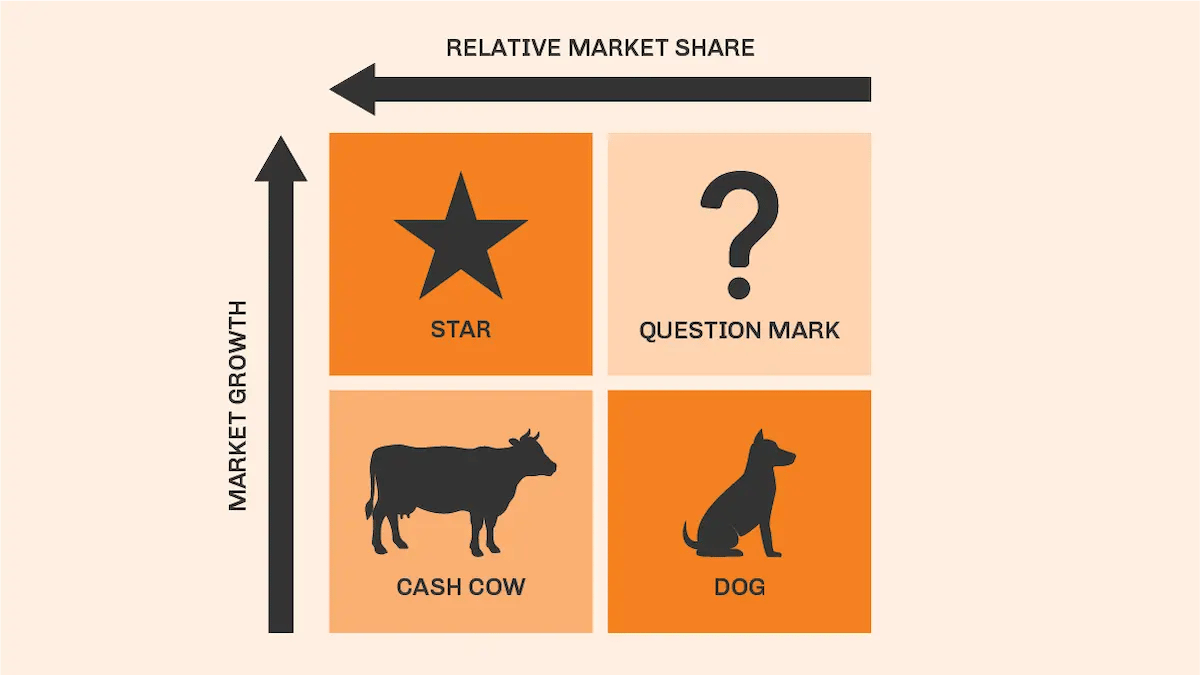Applying Marketing Growth-Share Matrix to Ecommerce
The growth-share matrix is a longstanding marketing strategy that first rose to prominence in the 1970s. It would go on to be used by more than half of all Fortune 500 Companies and today is still one of the most trusted marketing matrixes around.
Even though this solution is utilized by some of the biggest corporations in the world, it is a relatively simple and straightforward process that even smaller companies can utilize with great success. You just need to know how to apply it.
Ready to learn how you can apply this concept to grow your business?
| Growth-Share Matrix Explained |
What is the Marketing Growth-Share Matrix?
The growth-share matrix is a portfolio management framework that helps companies determine how to best prioritize different products based on profitability. The matrix is set up in a square with four separate quadrants.

The basic concept of this framework is that each business can fit into one of the following four categories:
Cash Cow
These are products that are performing well and should be “milked” for as long as possible. Companies want to take advantage of the returns from these products until they stop performing so well.
Star
Products that make up a sizable portion of the market and are in a high-growth market are seen as “stars” these should be invested in more. Products like this generate a lot of income, but still consume large amounts of cash. Over time, a star can remain a leader in the market, or eventually become a “cash cow” if the market’s growth rate slows down.
Question Marks
Products that fall into the “question mark” category are typically products that grow fast but consume a lot of company resources in the process. Any product that falls into the question mark quadrant has the potential to go into a “star” but it can also devolve into a “pet” so they should be watched closely and analyzed frequently to determine if they are worth maintaining or not.
Pets
Pets, also known as dogs, represent the least valuable products in the matrix. If a product has a low market share and is growing at a low rate, it is considered a “pet.” These are products that generate very little, or no, cash and have both low market share, and are showing no signs of growth. If not handled properly, “pets” can turn out to be very detrimental to a business and tie up company funds for extended periods.
From there, executives can decide where to focus their resources to generate the most money, and where they can make cuts to save. This matrix was developed on the concept that market leadership leads to better returns.
How Does the Marketing Growth-Share Matrix Work?
The matrix highlights two factors that companies should consider when deciding where they want to invest funds: company competitiveness and market attractiveness. The two underlying factors this matrix uses as part of this process are market share and growth rate.
Each of the four quadrants represents a different combination of market share and growth rates. Here’s how to make product decisions within each of these quadrants.
- “Cash Cows” = Low Growth, High Share. Products that fall into this quadrant generate returns higher than the market’s growth rate. They are typically leading products in mature markets. This cash can then be used to reinvest in the business.
- “Stars” = High Growth, High Share. Businesses should invest heavily in “stars” as these products have high future potential. Unlike “cash cows” they are projected to grow and generate more income over time.
- “Question Marks” = High Growth, Low Share. Question mark products are complete unknowns, they can go either way and will require further research to determine whether or not they have the ability to become stars. Companies should invest in or ignore these “question marks” based on further research.
- “Pets” = Low Share, Low Growth. This quadrant represents the least profitable products. Products that fall under the “pets” category should be liquidated or repositioned.
With this matrix, the value of a product depends on whether or not a company can obtain the leading share of its market before the growth slows down. According to the growth-share matrix, all products will eventually turn into “cash cows” where they make a lot of money, or “pets” which become obsolete.
While the system was created long before the Ecommerce boom, it is still applicable to online sellers who want to maximize their profits by focusing on the right products or services.
Other Factors to Consider With the Growth-Share Matrix
Companies can keep themselves organized by using this growth matrix, but it’s important to remember that it's not a predictive matrix. This means it doesn’t take into account new or disruptive products entering the market. It also isn’t robust enough to include rapid shifts in consumer demand. Product development can take many years, which means businesses need to plan accordingly contingencies.
Overall, the reason that this matrix has continued to be so popular is that the strategy always remains the same, even if the products or services vary greatly. No matter what, the cows still get milked, the stars still need more investments and the pets still need to be ignored. With this in mind, you can start utilizing this unique matrix to determine which products you invest in and which you don’t to experience the best possible growth for your brand.
 You've made it this far and you've learned so much. Congratulations!
You've made it this far and you've learned so much. Congratulations!
If you're looking to learn more about marketing or Ecommerce in general, feel free to reach out to us at: solutions@undigital.com
You May Also Like
These Related Stories

Using the Marketing Ansoff Matrix in Ecommerce

Marketing Product Lifecycle Guide - The Ups and Downs


